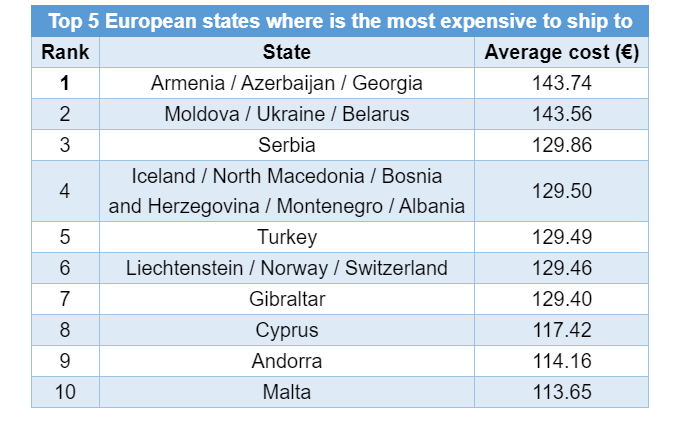A new study by cross-border shopping platform UBuy Switzerland reveals the states where is most costly to ship to are Armenia, Azerbaijan, and Georgia.
The study compared shipping costs from everywhere in the world to all European countries, and then calculated the average to discover which countries are most expensive to ship to.
Armenia, Azerbaijan, and Georgia share the top spot with an average of €143.74 (around US$152). As the three countries are neighbours in the Caucasus region, the shipping costs are expected to be similar.
In second come Moldova, Ukraine and Belarus by a whisker with an average shipping cost of €143.56 (around US$151.90).
Serbia is the sole occupant of the third place with an average of €129.86 (around US$137.40), a significant drop from the first two spots.
Further down on the list, there are five different countries in fourth place: Iceland, North Macedonia, Bosnia and Herzegovina, Montenegro and Albania. In these countries, the average shipping cost is €129.50 (around US$137).
The top five closes with Turkey, whose cost differs from the previous spot by €0.01 as the average shipping is €129.49 (US$137). This further underlines the closeness in prices expected from neighbouring countries and the overall high shipping costs to the Caucasus region and the Balkans.
The second part of the top 10 sees Western European countries, as Liechtenstein, Norway, and Switzerland are the sixth countries on the list with an average shipping cost of €129.46 (US$136.90).
Gibraltar takes the seventh spot with €129.40 (US$136.90), while Cyprus is eighth with an average shipping cost of €117.42 (US$123.90).
The last two spots are occupied by Andorra and Malta, with an average shipping of €114.16 (US$120.80) and €113.65 (US$120.20), respectively.

A spokesperson for UBuy Switzerland commented on the findings, "It’s interesting to note how most of the countries listed in the top five are situated in Eastern Europe and the South Caucasus region. The elevated costs to ship in the region can be attributed to various factors including geopolitical complexities, infrastructure challenges, and customs regulations.
"The study highlights the importance of understanding the unique shipping dynamics in each of these countries and the need for businesses to factor in these costs when planning their operations in these regions."








